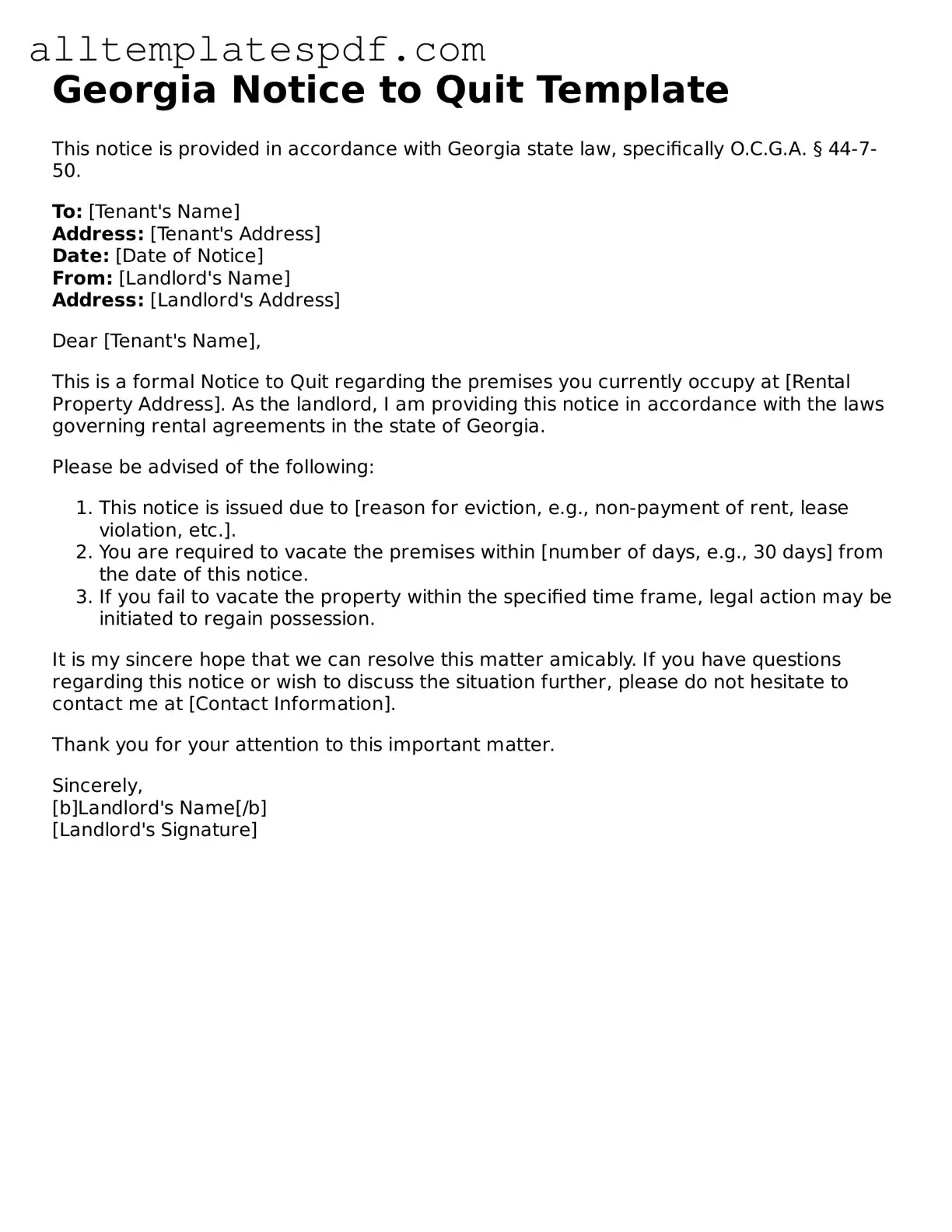Completing the Georgia Notice to Quit form requires careful attention to detail. One common mistake individuals make is failing to provide accurate tenant information. This includes the full name of the tenant and the address of the rental property. Inaccurate or incomplete information can lead to delays in the eviction process or even dismissal of the case.
Another frequent error involves the failure to specify the reason for the notice. Georgia law requires that the reason for the eviction be clearly stated. Without this crucial information, the notice may not meet legal standards, potentially undermining the entire process.
Many people also overlook the importance of including the correct date on the notice. The date serves as the starting point for the notice period. If the date is incorrect, it may confuse the tenant and complicate the eviction timeline.
Some individuals neglect to sign the form. A signature is essential for validating the notice. Without it, the document may be considered incomplete, which can lead to complications in court.
Additionally, it is important to provide the proper delivery method for the notice. Many people mistakenly believe that any form of delivery is acceptable. However, Georgia law outlines specific methods for serving the notice, such as personal delivery or certified mail. Failing to follow these guidelines can result in the notice being deemed invalid.
Finally, individuals often forget to keep a copy of the completed Notice to Quit form for their records. Retaining a copy is vital for future reference and can serve as evidence if the matter escalates to court. Without this documentation, it may be challenging to prove that the notice was properly issued.
